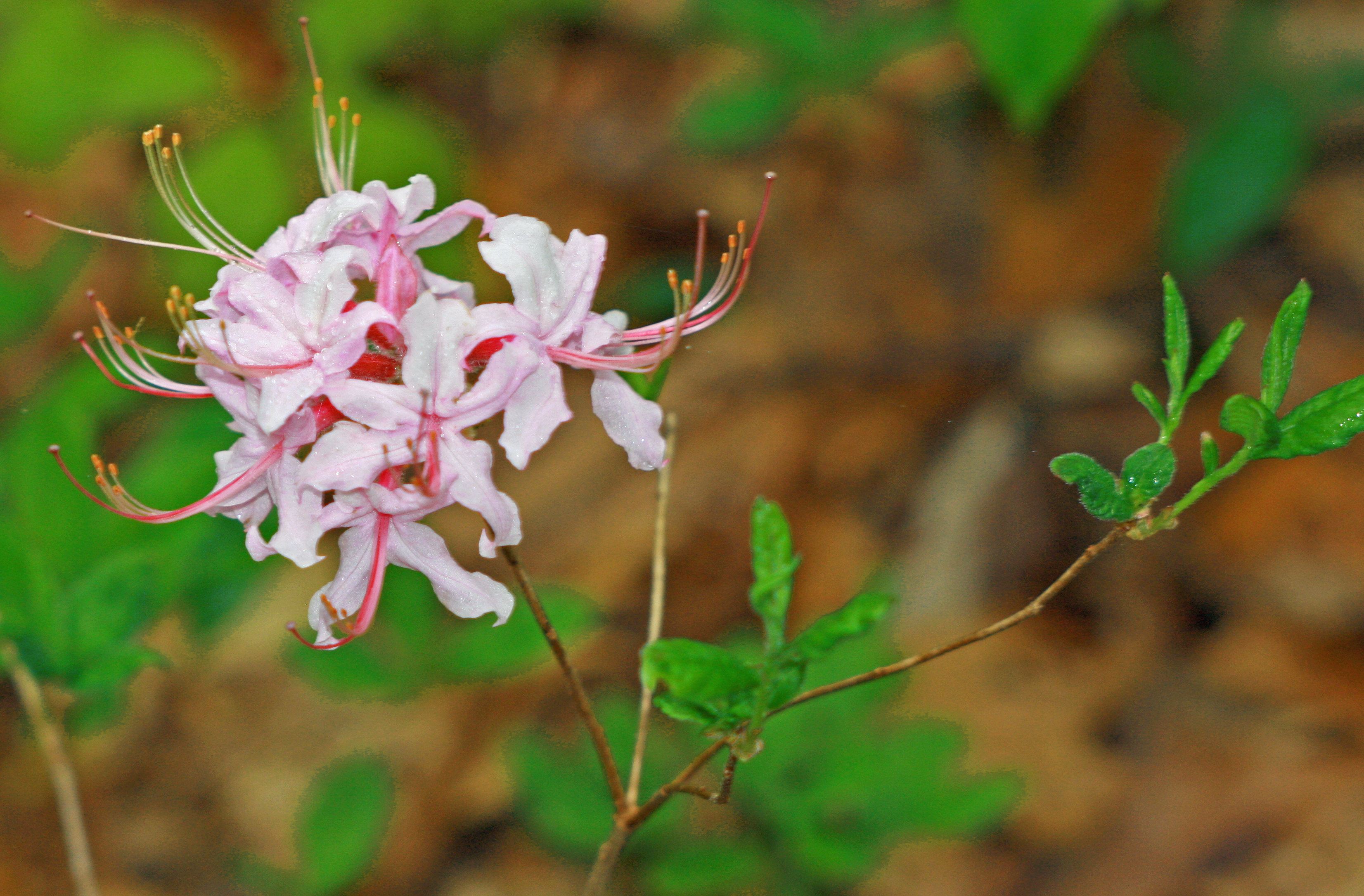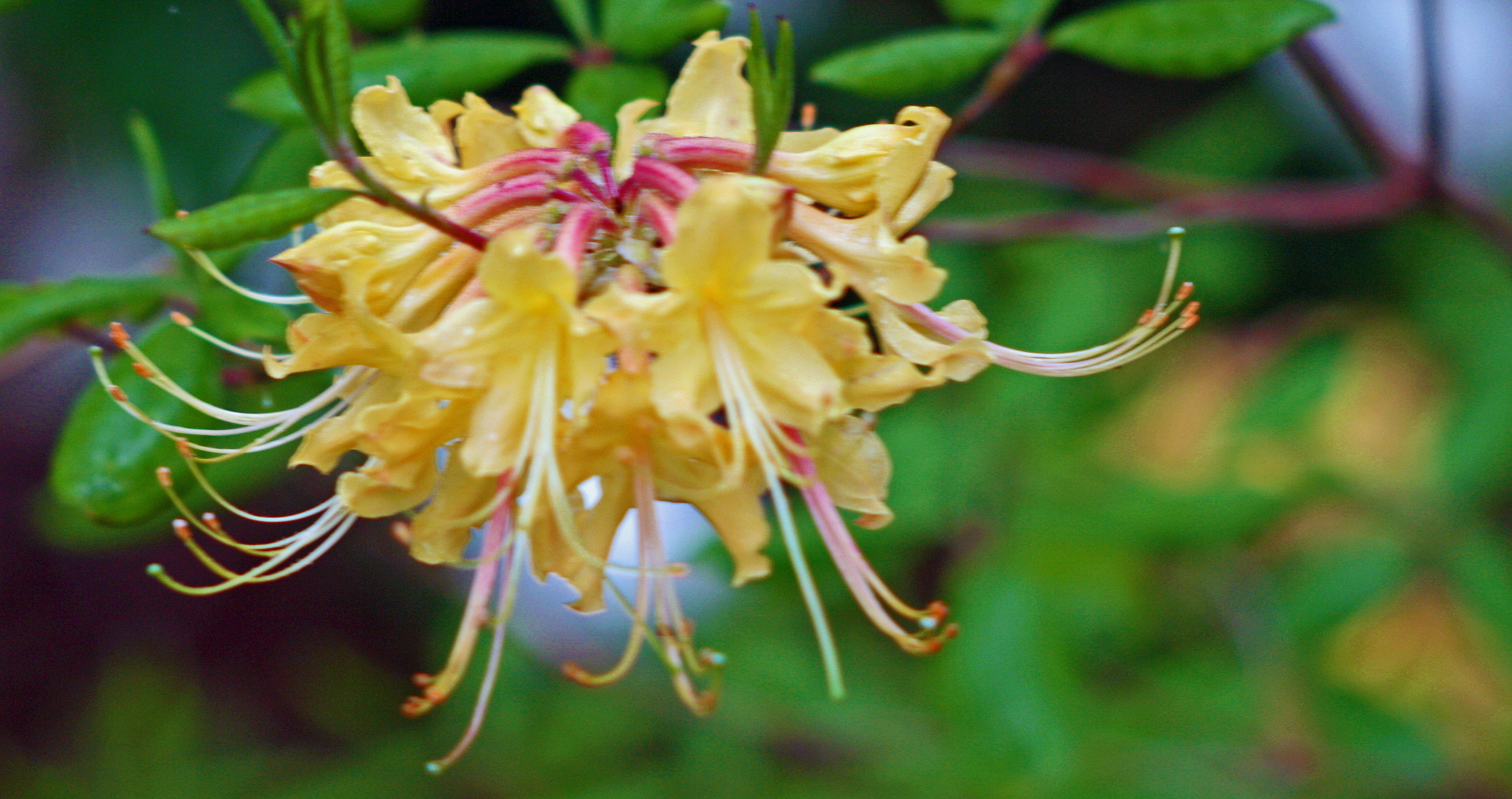Azaleas have been ca lled the “Royalty of the Garden” by some and with good reason. Native to Asia, Europe and North America, gardeners have cultivated them for hundreds of year.
lled the “Royalty of the Garden” by some and with good reason. Native to Asia, Europe and North America, gardeners have cultivated them for hundreds of year.
While these cultivars adorn the yards of countless homes around the world, fewer landscapes showcase the delicate and extraordinary beauty of native azaleas. They deserve more attention and care from the gardening community.
There are 18 species of azalea shrubs in North America. All are deciduous. Several are endangered. (Evergreen azaleas are native to Western Asia.)
Southeastern and Mid-Atlantic Azaleas
Fifteen azaleas are native to the country’s southeast region. Some are native to the Mid-Atlantic and others will grow in the region.
 Their come in a range of colors: white, pink, yellow, orange and red. They bloom from late March to the end of August. Some species prefer the mountains, others like moist sites. There are shrubs will wonderful fragrances and others with none. They offer a tantalizing variety of characteristics from which to choose.
Their come in a range of colors: white, pink, yellow, orange and red. They bloom from late March to the end of August. Some species prefer the mountains, others like moist sites. There are shrubs will wonderful fragrances and others with none. They offer a tantalizing variety of characteristics from which to choose.
Azaleas Native to the Northeast
Rhododendron canadense grows from Canada south to Pennsylvania and New Jersey. Chris Mattrick of the US Forest Service says, “Never has such a strikingly beautiful plant had such a ho-hum name.”
Azaleas for the West Coast
Rhododendron occidentale, the western or California azalea, grows in northern California, Washington and Oregon. Rhododendron albiflorum, or Cascade azalea, grows in a limited range from British Columbia to Oregon and east to Western Montana. Considered a wild flower, information about this plant with white flowers s inconsistent. It is not included in some lists of native azaleas.
Growing Natives in Maryland
Azaleas, which like acidic soil, are well suited for the Mid-Atlantic region. Carroll County, for example, has acidic soil as a result of the oak forests that used to cover the county.
They also like good drainage and light shade. Plant the
m under oak or pine trees with the lower branches trimmed. They should not be planted near maples, elms, ashes or other trees with shallow root systems since they will be forced to compete with the tree roots, according to Dr. Sandra McDonald in the Journal American Rhododendron Society.
 “Many different wild species of deciduous azaleas are found from Alabama and Georgia to Maine. A few of these species are austrinum (Florida azalea), canescens (Piedmont azalea), speciosum (Oconee azalea), periclymenoides (pinxterbloom azalea), atlanticum (coastal azalea), and calendulaceum (flame azalea). Since so many rhododendrons and deciduous azaleas grow wild in the eastern U.S. we might expect many of these plants and various hybrids of them to do well in our Middle Atlantic gardens, and they do!,” Dr. McDonald wrote.
“Many different wild species of deciduous azaleas are found from Alabama and Georgia to Maine. A few of these species are austrinum (Florida azalea), canescens (Piedmont azalea), speciosum (Oconee azalea), periclymenoides (pinxterbloom azalea), atlanticum (coastal azalea), and calendulaceum (flame azalea). Since so many rhododendrons and deciduous azaleas grow wild in the eastern U.S. we might expect many of these plants and various hybrids of them to do well in our Middle Atlantic gardens, and they do!,” Dr. McDonald wrote.
Her article gives excellent advice on how to care for these shrubs: http://scholar.lib.vt.edu/ejournals/JARS/v37n2/v37n2-mcdonald.htm
Be sure to acquire plants from reputable sources who have bred them from seeds or cuttings. Native plants in the wild are already over grazed by deer, over collected by people and facing a loss of habitat. Plants removed from the wild also leaves a vacancy that invasive plants will typically fill leading to a further damage to the forest.
Win-Win!
Growing native azaleas allows you to add a touch of native royalty to your garden. You, in turn, will preserve some of nature’s original artwork for future generations.
 Laura
Laura
